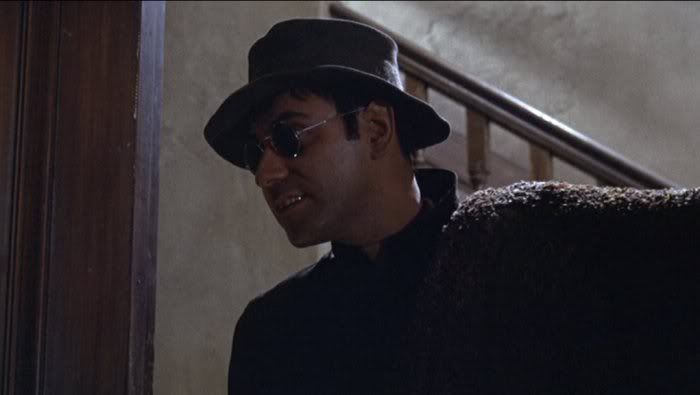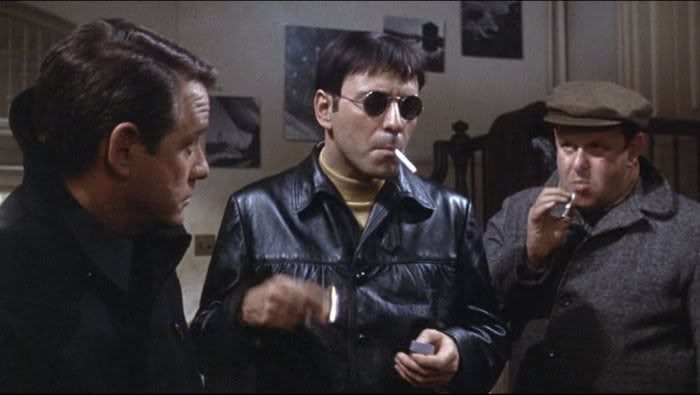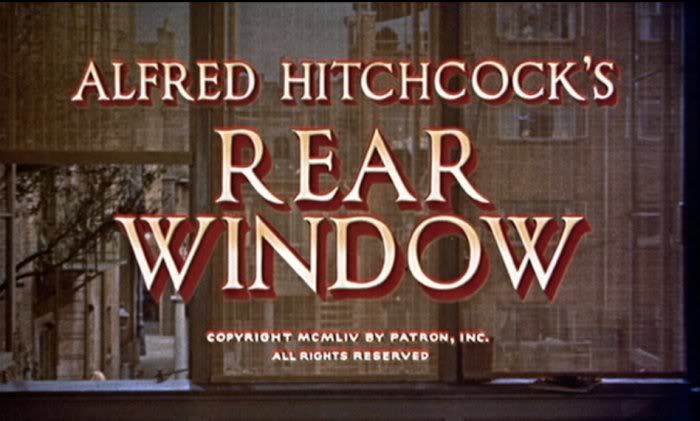
So, it was a rainy, foggy night (dark, but not stormy) when us young bucks gathered around and, after hours of lively conversation, started our first movie for the night, Alfred Hitchcock’s “Rear Window.” My mom always said I should see Hitchcock’s films. To a contemporary filmgoer, his movies are clichéd. That’s because, of course, he did it first and others copied off him! To boot, Hitchcock does it good. Real good.
The only other Hitchcock film I had seen at this point was “North by Northwest,” a precursor to today’s non-stop action thrillers, but a hell of a lot more gripping and funny. For “Rear Window,” I was prepared for more first-class thrills, but I was also looking forward to a particular actor’s performance. No, not Jimmy Stewart, but Raymond Burr, who I was quite familiar with from “Godzilla, King of the Monsters!” and “Godzilla 1985.” I had never thought of Burr as one to play a scary role, but he creeps it up for Rear Window as the suspicious neighbor who may or may not have killed his wife and snuck her body out of his apartment… in small pieces. He starts out normal enough, but the more we see of him, the more sinister he becomes.
Jimmy Stewart plays L.B. Jefferies, an action photographer for a magazine. As the story begins, Jefferies is stuck in a wheelchair with a broken leg after getting too close to a tumbling race car. An action man with nothing to do, he sits in his apartment all day and stares out at the courtyard and the windows of other peoples’ rooms. He takes particular interest in an arguing couple, becoming alarmed when the wife suddenly disappears and the husband leaves the house on late-night excursions. Too bad nobody else shares his suspicion. Or his interest.
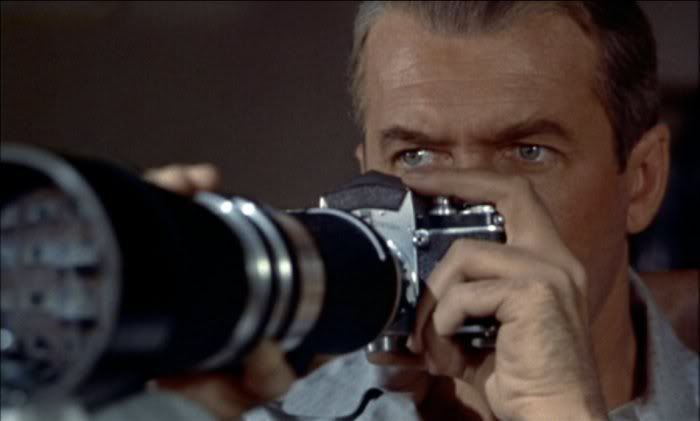
Stewart gets snoopy
The plot to Rear Window is suspenseful but simple. One might liken it to one of today’s thrillers. But what makes the film good isn’t just the plot, but everything about it. From the performances, the cinematography, and the use (or lack of) music, the film is rich. This is true of all movies; it does not matter what the plot concerns, or if there are great special effects or an awesome soundtrack. A truly good film excels at many or all aspects. Rear Window is then truly a great film. Jimmy Stewart is likeable and funny, cutting it up with both his nurse (Thelma Ritter) and would-be wife (Grace Kelly) in clever and witty dialogue that is apparently a Hitchcock trademark (I can only assume this, as “North by Northwest” contained much of the same sharp banter between its main characters). A particular line that lives in my mind is when Stewart’s character fails to convince his detective friend of the murder. The detective, on his way out, asks if there’s anything else he can do, to which Stewart replies, “Yah, bring me a better detective.”
 It's a bitch when you can't reach your itch.
It's a bitch when you can't reach your itch.
The stand-out quality of Rear Window is definitely, however, the incredible set - the only one used in the film - and how Hitchcock uses it to paint a lively and diverse world within Jefferies’s apartment complex, full of characters, and each with their own very personal story. As the film opened, my friend Jared pointed out the elaborate set. I was impressed; the camera started at a busy city street (which, later in the film, is doused in a deep red sunset that could only exist in filmland) then panned inward through a courtyard bustling with activity: a middle-aged woman catching the afternoon rays of the sun; a young sexy lady dancing half-naked in her living room with the blinds up; Raymond Burr’s character tending his garden; a woman lowering a basket carrying her dog from the top floor. Then the camera travels inward more, through the window of Jimmy Stewart’s apartment, past a smashed camera on a table, past a picture of a race car, past a picture of a race car in flames, then to a leg bound in a cast bearing the message “Here lie the bones of L.B. Jefferies,“ and then to a full view of Stewart himself, sitting in his wheelchair and looking painfully bored. All of this is done in only a few shots; the only cuts are merely used to establish the setting and the situation. There is no need to cut away to avoid revealing the end of a stage, because the whole world of Rear Window is all right there in that intricate set.
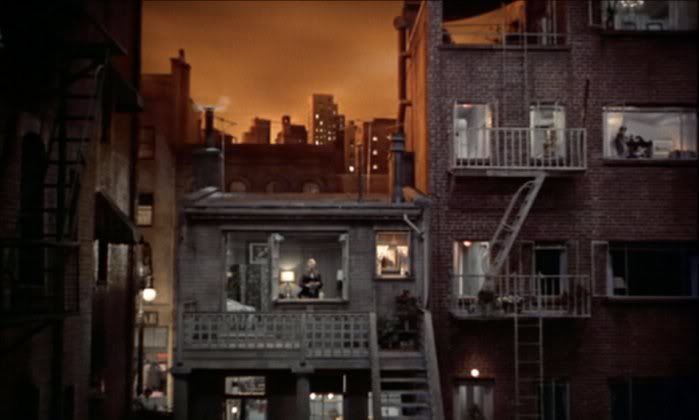
Only a small part of the massive set - even the waning sun and cityscape are props!
What a way start the movie! Not only was the opening a technical achievement, but it told enough stories to fill a whole book in just one minute, the final tale being how Jefferies ended up in the wheelchair in the first place, and without a line of dialogue. Now that’s filmmaking for ya.
Along with Stewart, we are constantly staring out the rear window at the going-ons of his residence. We see a man exhausted by his newlywed wife who is constantly demanding more bedroom time, a musician living in a studio apartment who is always inviting over company, including a group of guys competing for the half-naked dancer, a woman on the bottom floor who is driven mad her desperate loneliness, a couple that enjoys sleeping under the stars on the fire escape, and a husband who is so fed up with his nagging wife that her sudden absence from the daily activities seems more than a little suspicious.
 "Well George, it's big and terrible!"
"Well George, it's big and terrible!"
The action and suspense builds up gradually, never going over the top and remaining steady enough to hold the viewer’s attention. We were glued to our seats. We laughed at the banter between Stewart and his nurse (Ritter injected a so much wit and humor into her character that it's a shame she is often overlooked in this film) and were engrossed in the mini-stories happening all over the courtyard, and gripped when the one sinister plot began to gain momentum. Small moments built up into a final crescendo, never missing a beat. When we peered into Burr’s pitch-black apartment to see only the burning glow of his cigarette, we couldn’t shake the feeling that he was watching us. And as Kelly and Ritter become interested in Burr’s activities, we got excited with them.
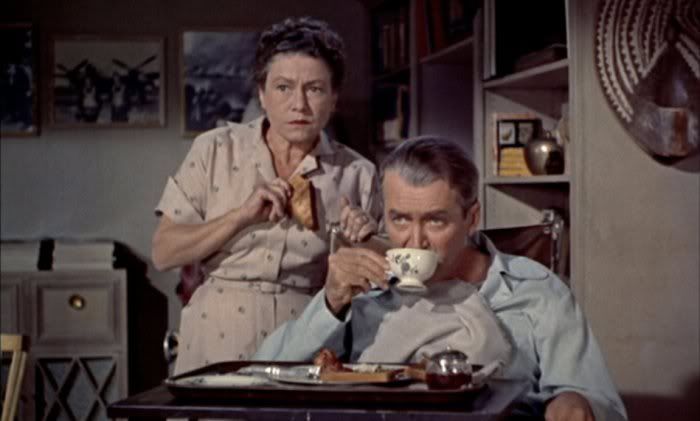
Even the nurse gets interested in invading the privacy of others.
It was in these tense scenes that I recognized moments from more contemporary films. When Stewart calls Burr’s apartment to tell him he knows about the murder, we see Burr’s reactions through the lenses of a telescope, and I was reminded of a nearly identical scene in the Nicolas Cage thriller “8MM.” When the only sign of an approaching killer was the sound of his footsteps and his shadow blocking the light under the crack of a door, I was reminded of the 2007 Academy Award Best Picture winner “No Country for Old Men,” and it was here that I realized that Hitchcock has laid the groundwork for the pictures that hold our attention today, whether we or the filmmakers know it or not.
By the end of the film, we all felt fulfilled by this short and effective thrill-ride. We were as much invested in the outcome of the lonely woman as we were the main murder plot, and in the end we were wiping our brows, now safe in the house. When I stepped outside to get some fresh air before our next film, the dense fog filtered the light from neighbors’ windows, and I could only wonder what was going on behind them. Yep, we had seen a great film, because it stayed with us.
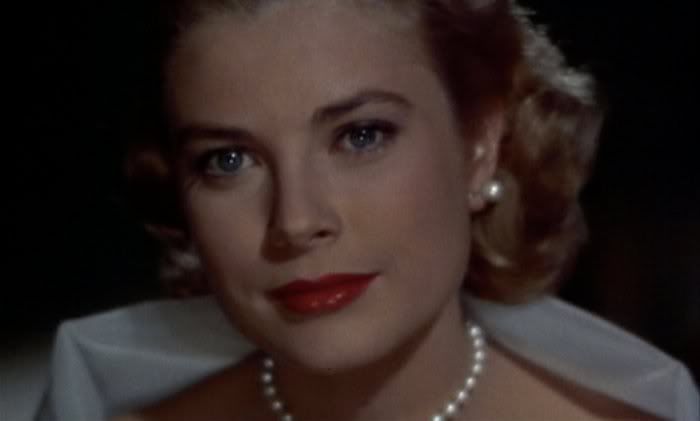 Quintessential '50s Hollywood glamour
Quintessential '50s Hollywood glamour
Rear Window as a “fun” type of scary; our spirits were high at its conclusion. For me, the streets wouldn’t seem nearly as sinister until we finished our second film, “Wait Until Dark,” which was nearly devoid of humor and left me wondering if I should check the back seat of my car before driving home. In the thirteen years that passed from the filming of “Rear Window” to “Wait Until Dark,” Hollywood became much more dark and gritty, and ever more gripping.

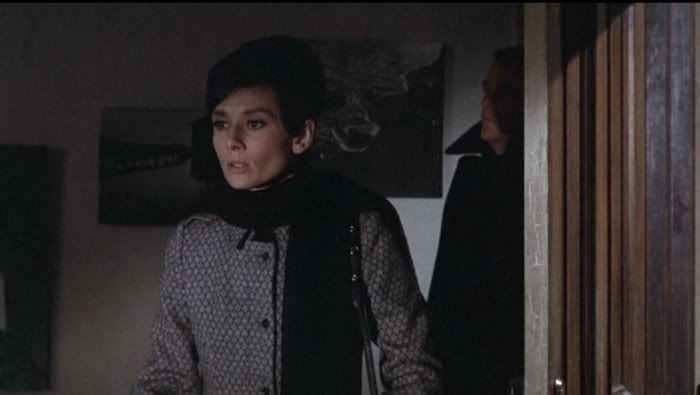
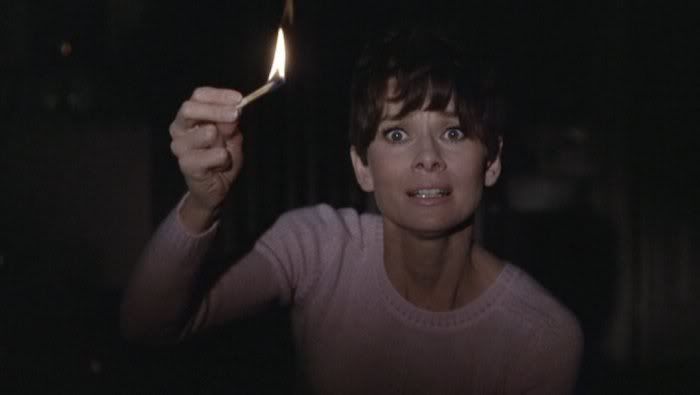
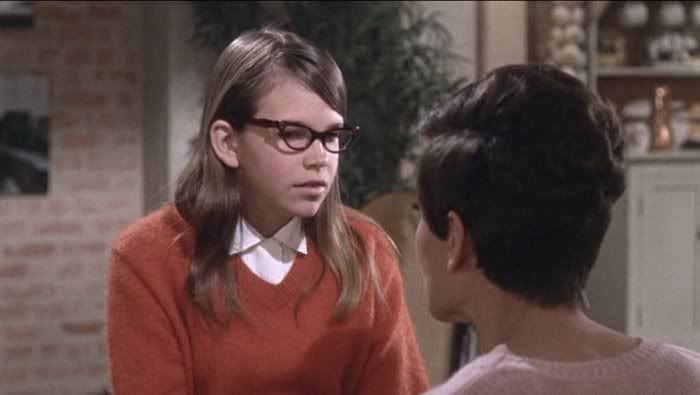 Why would anybody ever wear horn-rimmed glasses?
Why would anybody ever wear horn-rimmed glasses?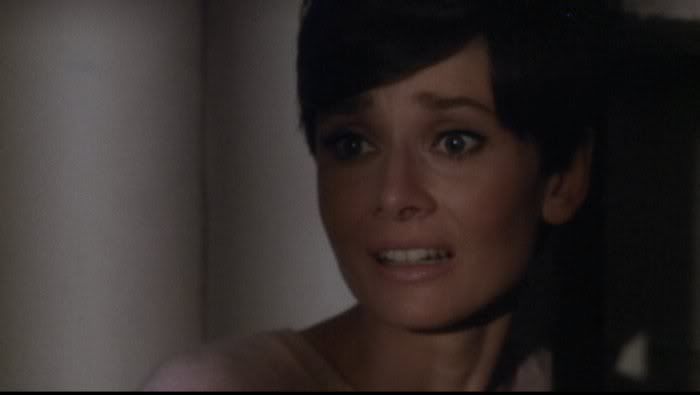 No one does "terrified" like Hepburn.
No one does "terrified" like Hepburn. 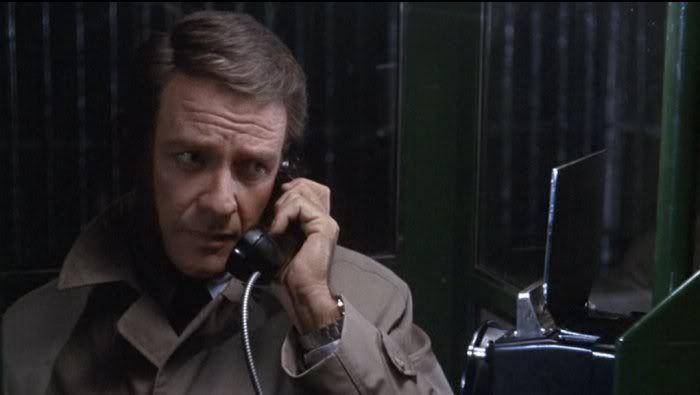 "What's that you say? Wait until dark? It's already dark! What? You're blind? I knew that."
"What's that you say? Wait until dark? It's already dark! What? You're blind? I knew that."

